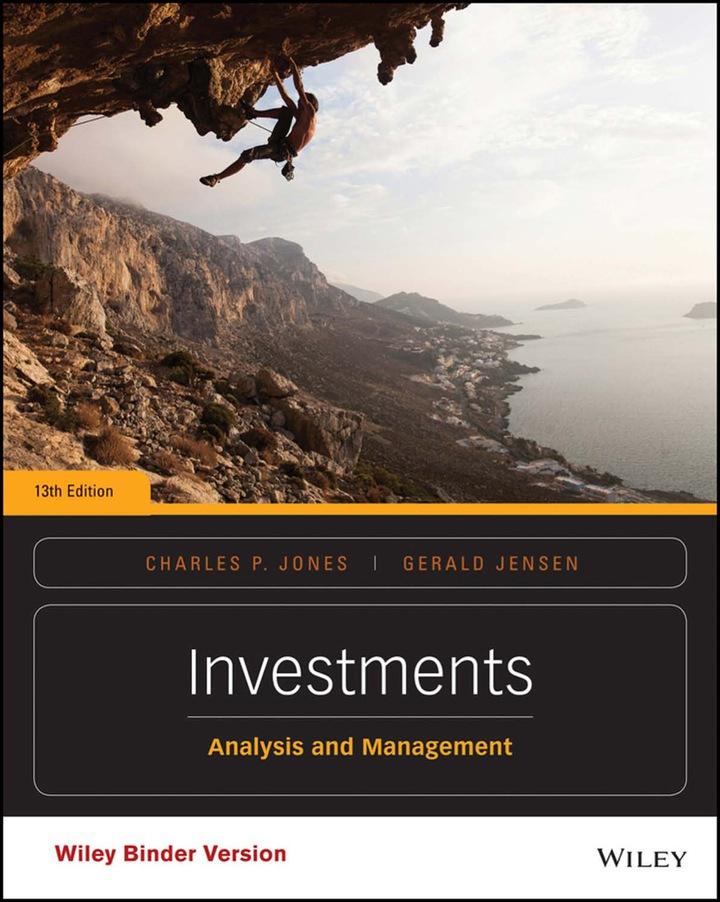Question
Q1- The average annual total returns for the Titan equity fund as follows: 10 years Titan equity fund 11.94% Investing $10,000 in the Titan fund
Q1- The average annual total returns for the Titan equity fund as follows:
| 10 years | |
| Titan equity fund | 11.94% |
Investing $10,000 in the Titan fund and compounding at the rate of 11.94 percent each year for 10 years would produce final wealth of $....................?
Q2- For a recent 10-year period, T. Rowe Price, a mutual fund company, reported performance (average annual total return) for two of its funds as follows:
Equity Income Fund= 12.48%
Personal Strategy Growth Fund= 12.26%
Assume you invested $5,000 in each fund at the beginning of this 10-years period. How much difference would there be in the ending wealth between the two funds?
Q3-For the same two funds discussed in Q2 the ending wealth after five years was $1.2438 per dollar invested at the beginning for the Equity Income Fund, and $1.0492 per dollar invested at the beginning for Personal Strategy Fund. What were the annual average total returns for each fund for this five-year period?
Q4-The net asset value per share for the T. Rowe Price Global Stock Fund at the beginning of one recent year was $15.07. During the year, the fund earned $0.04 in net investment income and $1.82 in "net gains or losses on securities". It distributed $0.03 in dividends and $0.02 in capital gains. What was the net asset value for this fund at the end of the year?
NAV = NAV + net investment income + net gains or losses on securities - dividends - distributions from capital gains.
Q5- As of December 31, 2016, the 10-year annualized rate of return (geometric mean) for the Wall Street Emerging Growth Fund was -8.45 percent. Assume an investor invested $10,000 in this fund on January 1, 2007. How much would this investment be worth on December 31, 2016, a 10-year period?
Q6- Impact of Capital Appreciation on NAV:
A) Suppose a mutual fund contains 1000 shares of Sears currently trading at $37.75, 2000 shares of Exxon/Mobile currently trading at $43.70, and 1,500 shares of AT & T currently trading at 46.67. The mutual fund currently has 15,000 shares outstanding held by investors. Calculate NAV of the fund.
b) If next month Sears shares increase to $45, Exxon/Mobile shares increase to $48, and AT&T shares increase to $50, the NAV (assuming the same number of shares outstanding) would increase to?
Q7- Impact of Investment Size on NAV
Consider the mutual fund in Q6, but suppose that today 1,000 additional investors buy into the mutual fund at the current NAV of $ 13.01. This means that the fund manager now has $ 13,010 in additional funds to invest. Suppose the fund manager decides to use these additional funds to buy additional shares in sears. At today's market price he or she can buy $13,010 / $37.75 = 344 additional shares of Sears. Thus, the mutual fund's new portfolio of shares would be 1,344 in sears, 2,000 in Exxon/Mobil, and 1,500 in AT&T. Given the appreciation in value of all three stocks over the month, the NAV of the portfolio at the end of the month would be........................?
Q8- Calculation of Mutual Fund Costs
The cost of mutual fund investing to the shareholder includes both the one-time sales load and any annual fees charged. Because the sales load is a one-time charge, it must be converted to an annualized payment incurred by the shareholder over the life of his or her investment. With this conversion, the total shareholder cost of investing in a fund is the sum of the annualized sales load plus any annual fees.
- For example, suppose an investor purchases fund shares with a 4 percent front-end load and expects to hold the shares for 10 years. The annualized sales load incurred by the investor is?
- Further, suppose the fund has a total fund expense ratio (including 12b-1 fees) of 1 percent per year. The annual total shareholder cost for this fund is?
Step by Step Solution
3.54 Rating (154 Votes )
There are 3 Steps involved in it
Step: 1
Q1 To calculate the final wealth after 10 years of compounding at a rate of 1194 per year we can use the compound interest formula Final Wealth Principal 1 RateTime Where Principal 10000 Rate 1194 or ...
Get Instant Access to Expert-Tailored Solutions
See step-by-step solutions with expert insights and AI powered tools for academic success
Step: 2

Step: 3

Ace Your Homework with AI
Get the answers you need in no time with our AI-driven, step-by-step assistance
Get Started


